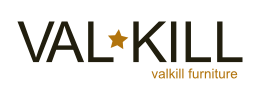Woodworking Overview - Week 1 - Materials and Fasteners
We will cover Materials, Tools and Techniques.
WOODWORKING OVERVIEW - WEEK 1 – MATERIALS AND FASTENERS;
Wood Types
Wood is either natural or manmade. Some woods, like plywood use natural wood veneers that are then glued together, so it is technically manmade.
- Plywood
- Board lumber
Plywood
- Sold in 4’ X 8’ sheets; but can be purchased in smaller pieces – HOWEVER – it is generally cheaper to buy the 4x8 sheet and ask the Home Depot personnel to cut it down on the panel saw at the store.
- Thicknesses are typically ¼”, 3/8”, ½”, 5/8”, or ¾”. These dimensions are generally pretty close, though ¾” is actually 23/32nds, which is very close.
- Grades are typically A, B, C & D. A is high end stuff I’ve never actually used. B is next and is sometimes available as birch plywood and/or furniture grade plywood. C & D are more generally available and are often combined on the same product (CDX), which means C on one side and D on the other.
- Types
- OSB – oriented strand board – large wood fibers glued together. Basically wood chips glued and compressed.
- CDX – exterior rated C&D graded wood – what you generally think of when you say “plywood”
- MDF – primarily used indoors – sold in 49”X97” sheets
- Extira – exterior rated MDF.
- Bendable plywood – wonderfully flexible wood – used in furniture, or sometimes structural building applications
- Luann – 1/8th or ¼” thickness. I use this for templates and designing new shapes. It used to be made from Luann, now more commonly made from oak or birch?
Board lumber - how purchased?
- Purchased one of three ways – as a fixed length, in bf (board feet), in lf (linear feet).
- Most construction lumber is sold as a fixed length, like 8’ 2X4’s for example.
- A board foot is 12”X12”. So a board that is 12 feet long and 3” wide would be equal to 3 board feet.
- The same board sold in lf would be 12 linear feet.
- Typically, trim boards and some narrower boards are sold in linear feet
Species of lumber – There are a LOT of wood species – the Wagner Meters Handbook lists over 700 species of wood starting with the letter “A” alone!! I have listed them generally softest to hardest, based on the "specific gravity" of each species (Google it...) The bigger the number, the harder the wood. The very hard woods are extremely difficult to work with.
My most often used woods are listed in bold, and the easiest to find woods (ie. Home Depot) are underlined.
- Home Depot is better than Lowe’s in my experience for wood and fasteners. Both are decent sources. for most of th tools you'll need. I also love the guys at Marshall’s Lumber in Macon – they are knowledgeable and very helpful.
- A great source for a lot of most woods is the Woodyard in Concord, GA. I have heard great things and am planning on going there soon.
- A fabulous source for exotics and hard to find woods in Atlanta is Carltons Rare Woods and Veneers (Owner, Richard Kuendorf – tell him I said hello). He literally has anything and everything you'd ever need.
- Cedar – sg =.30; suitable for exterior, often seen as “beveled cedar siding”
- Pine – sg - .35; – used indoors for shelves, furniture, etc. Most often painted;
- Aspen – sg .37; easy to work with – hard to find.
- Poplar – sg = .4 – stains poorly, used extensively for inside of drawers, etc. because it rarely warps or bends.
- Maple (Soft) – sg = .45 – has a brownish tint, used in furniture, etc.
- Cypress – sg = .46 - I use it mostly for tables
- Walnut – sg .55 – furniture, sculptural
- Cherry – sg = .58; beautiful wood; used for tables and furniture – finishes well.
- Maple (Hard) – sg = .6 – sometimes “white maple”, used in furniture, etc.
- Sapele – .60; used for furniture, trim or shelving, etc.
- Padauk – sg = .6; a beautiful reddish orange wood that will turn drab brown in the sunlight unless it is finished with something that is a UV blocker (silicon, etc.)
- Teak – sg = .65; mostly exteriors; excellent for patio furniture, etc.
- Oak – sg = .7 – furniture, etc. See especially “Craftsman Furniture”, Stickley, etc.
- Wenge – sg = .8; Absolutely beautiful grain; smells like chocolate, but is a neurotoxin that can affect your nervous system if inhaled. (I can attest).
- Treated (wolmanized) – sold as “Prowood at Home Depot” – soft – exterior rated. Way underrated, in my opinion...
- Ipe – sg = .99!!; used for outdoor applications. Nearly indestructible, however, also extremely difficult to cut, screw, nail, etc.
Fasteners
- Purchased individually, by the pack or by the pound
- Screws (Pre-drill everything!)
- Slotted – oldest and worst – I don’t use them
- Phillips head – old standby – I use them a lot
- Square head – used for furniture
- Star drive – getting more prevalent – I am beginning to use them more.
- Nails
- Common
- Finish
- Tacks, brads, etc.
- Staples
- Recommend purchasing a T-50 version
- Used for installing insulation, building wrap, craft projects, etc.
- Glue
- Many different types – I recommend “Type 3” wood glue
- Guerilla glues, etc.
